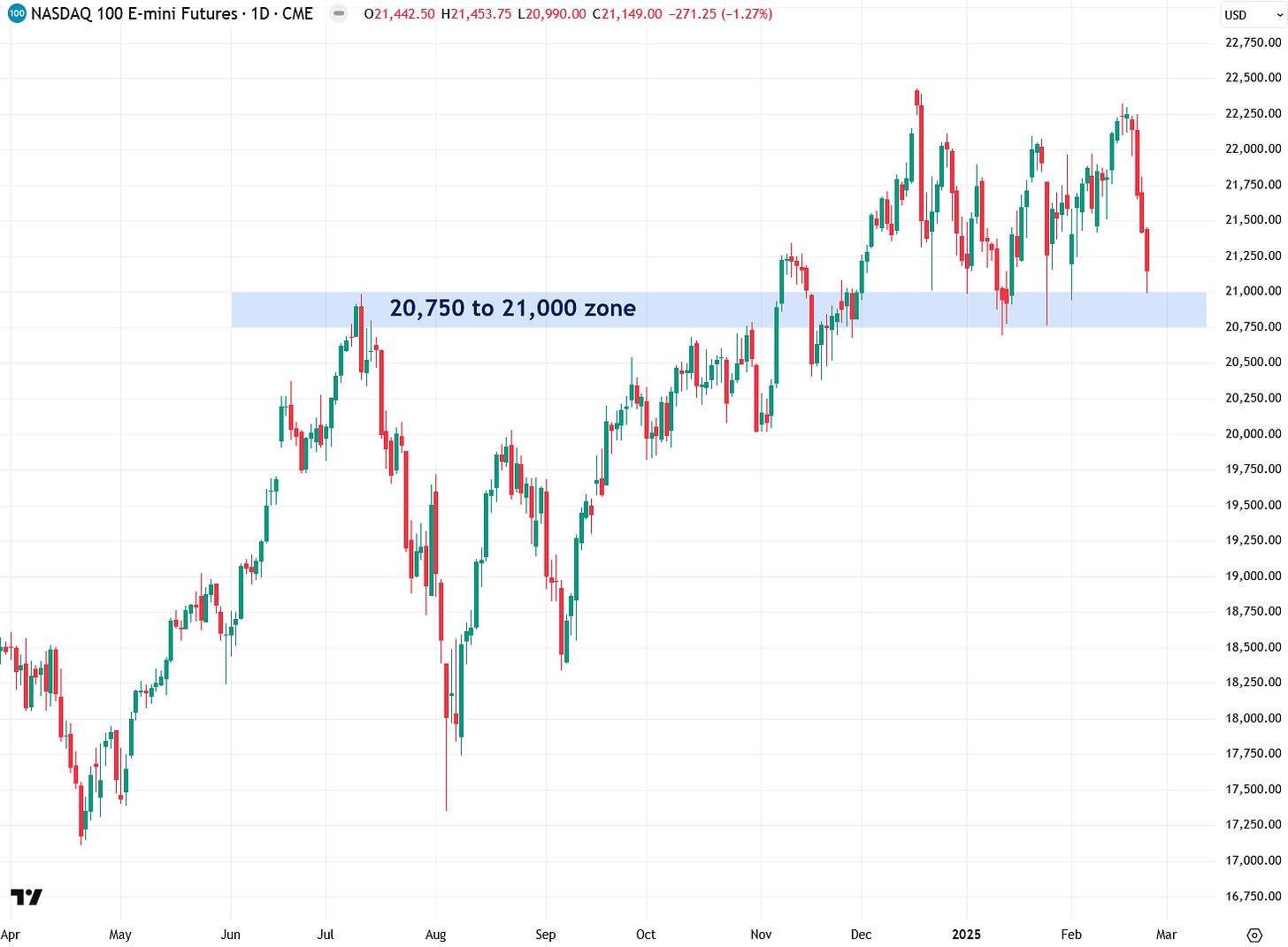Assessing the Damage in the Markets After Today's Selloff
Risk assets continue to sell off after last week's rout.
As I detailed in a comprehensive report on Sunday, risk assets—particularly high-flying U.S. stocks and cryptocurrencies—were showing increasing vulnerability as market sentiment swiftly shifted from extreme bullishness to caution. True to form, the selloff that began last week, wiping out nearly $1 trillion in market capitalization on Friday alone, has extended into this week with sharp declines and technical breakdowns across many of the assets I covered in that report. This update provides a fresh look at where those assets stand now.
The S&P 500 dropped 0.51%, while the Nasdaq 100 slid 1.27% on Tuesday as last week's bearish momentum continued, exacerbated by renewed market jitters over Trump’s revived tariff threats against Canada and Mexico. Adding to the pressure, The Conference Board’s consumer confidence survey revealed a sharp decline in sentiment, plunging from 105.3 to 98.3—well below expectations. Like other recent economic data, the report also highlighted surging inflation expectations. In essence, much of the post-election optimism that fueled risk assets after Donald Trump's victory has now been erased, contributing to their sharp declines.
Now, let’s turn to the technicals, starting with the bellwether S&P 500 index. As I’ve pointed out, the index has made multiple attempts to rally to new highs since December, but each effort has failed—a clear sign of weakness. I’ve been closely monitoring the 5,800 to 6,000 support zone, as a decisive close below this zone would confirm that a broader correction is underway. Today’s 0.51% decline, despite a late-session recovery, has pushed the S&P 500 deeper into that critical zone. The next few weeks will be key in determining the market’s next move.
The tech-heavy Nasdaq 100 fared significantly worse than the S&P 500, sliding 1.27% as the selloff hit high-flying tech stocks the hardest. Many of these once-dominant names are now experiencing sharp declines. A decisive close below the critical 20,750 to 21,000 support zone would be a strong signal that a deeper downturn is unfolding.
The high-flying tech stocks that have been leading the market—known as the "Magnificent 7"—include Alphabet, Amazon, Apple, Meta, Microsoft, NVIDIA, and Tesla. An exchange-traded fund (ETF) tracking this group, trading under the symbol MAGS, serves as a useful gauge for their performance. A concerning development is that the MAGS ETF has now closed below the critical $53 support level, which had acted as a firm floor in recent months. The next key level to watch is $50—if that breaks, it will likely trigger an even steeper selloff, not just for these stocks but for the broader market as well.
One of the Magnificent 7 stocks, Microsoft, may be forming a topping pattern on the weekly chart. A decisive close below the critical $380 to $400 support range would confirm this setup, likely triggering a sharp decline. If that scenario plays out, it would put significant pressure on both the Magnificent 7 and the broader market. This is a key stock to watch closely.






